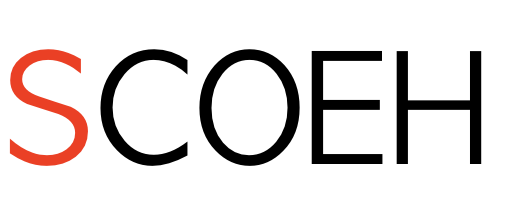In my last article I highlighted that we need the participation of the population to effectively battle against COVID-19. Information is central to achieve optimal participation, and I am not talking about information how to wash hands. I am an occupational hygienist. If a company asks me how to deal with a specific biohazard at their production plant, I need first information about the biohazard present, how many people work with the biohazard, in which parts of the production plant, in what type of setting, in what workflow, etc. In the same line of thinking, we need to share as much information with the public as possible. Having all non-confidential information published allows the public but also professionals such as journalists and occupational health and safety experts to assess the data and translate it into bespoke messages for their audiences.
Yesterday, the Swiss government declared that they soften their approach by simply asking for self-isolation and self-quarantine. This is a dangerous approach in a country where too many people still think that COVID-19 „is just another flu“. In my view, quarantines still must be authority-declared and ordered. The authorities say they can no longer track every case and contact. But if we stop the transmission from those we know about, we still can strongly reduce the spread of the disease. Taiwan’s vice president (an experienced viral epidemiologist) explained this in a very simple scheme:
1 case infects 3, no quarantine
1 -> 3 -> 9 -> 27 -> 81 -> 243 -> 729 -> 2’187 -> 6’561 -> 19’683 -> 59’049
1 case infects 3, quarantine 1 person
1 -> 2 -> 4 -> 8 -> 16 -> 32 -> 64 -> 128 -> 256 -> 512 -> 1’024
1 case infects 3, quarantine 2 persons
1 -> 1 -> 1 -> 1 -> 1 -> 1 -> 1 -> 1 -> 1 -> 1 -> 1
So what should be done?
The work load increases a lot as the number of cases increases. How can authorities keep on identifying and quarantining all the contacts of confirmed cases? How can hospitals cope with the overflow of mostly mild cases and people getting tested for the virus? Singapore and Taiwan show excellently how this can be done:
- Singapore activated Public Health Preparedness Clinics (PHPC): These are basically general practitioner clinics that are equipped and prepared to handle all types of respiratory illnesses (including testing for COVID-19) that do not requiring immediate hospitalisation.
- Taiwan and Singapore use all branches of the government, including the police if needed, to identify and locate close contacts of cases so that they can be ordered to stay in quarantine as soon as possible. In both countries violators of quarantine orders face harsh penalties.
- Both countries publicly share all non-confidential data of confirmed cases and contacts. This information can then be taken up by safety and health professionals and also the press. In Singapore, we see how such data can be converted to precious information. For example a map that shows the cases (https://sgwuhan.xose.net), or a visualisation of the spread (check the top for a birthday party of the graph here: https://infographics.channelnewsasia.com/covid-19/coronavirus-singapore-clusters.html??cid=h3_referral_inarticlelinks_24082018_cna)
At the workplace, we typically work by communicating good practices, but we also foster a safety culture, which is to establish a culture where people understand why health and safety measures are important and how they can actively participate in identifying unsafe work patterns and call for help if standard measures seem ineffective. How can this approach be used for the public?
- Share the many possible safe practices with simple schemes and attractive online videos. Singapore excels here. Check the many attractive posters: https://www.moh.gov.sg/covid-19/resources and watch how actors and comedians help spread the news, for example what a PHPC is: https://www.youtube.com/watch?v=PLvzkLZndbg&feature=youtu.be . Warning: these videos are addictive and you may end up hours in front of your computer or smart device!
- Tell people what is good and what is bad. Singapore framed for this the term of „socially (ir)responsible behaviour (https://www.gov.sg/article/covid-19-spread-caused-by-socially-irresponsible-behaviour).
- Include the press as a partner. Journalists are trained to communicate complicated facts to the general public in comprehensible fashion. Check for example how Taiwanese CNA explained rules about school closing (https://focustaiwan.tw/society/202002255001) or how quarantine works (https://focustaiwan.tw/society/202002115001).
There are many other measures that are taken in Singapore (https://www.moh.gov.sg/covid-19/advisories-for-various-sectors) and in Taiwan (https://www.cdc.gov.tw/En) that can inspire governments in Europe and elsewhere. The battle is not lost. The fight must continue.
Change log: 2025-02-12, Replaced broken link to two gov.sg pages by Internet-Archive-Links.
